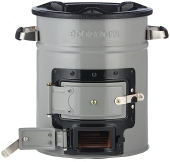
 6
6




 7
7





 6
6




 2
2





 5
5




 4
4




Our inability to change everything should not stop us from changing what we can.
 3
3





 3
3





 3
3




 3
3




 2
2




 1
1




Douglas Alpenstock wrote:When you put a grate and a pot on the exhaust, will that slow down the draft enough for fresh wood to catch fire?

 1
1








Glenn Herbert wrote:That is curious, dry wood laid on top of burning wood generally catches fire, even more when fanned by a draft. How dry is your larger wood?
 2
2




 4
4




 4
4





|
They worship nothing. They say it's because nothing lasts forever. Like this tiny ad:
Learn Permaculture through a little hard work
https://wheaton-labs.com/bootcamp
|





